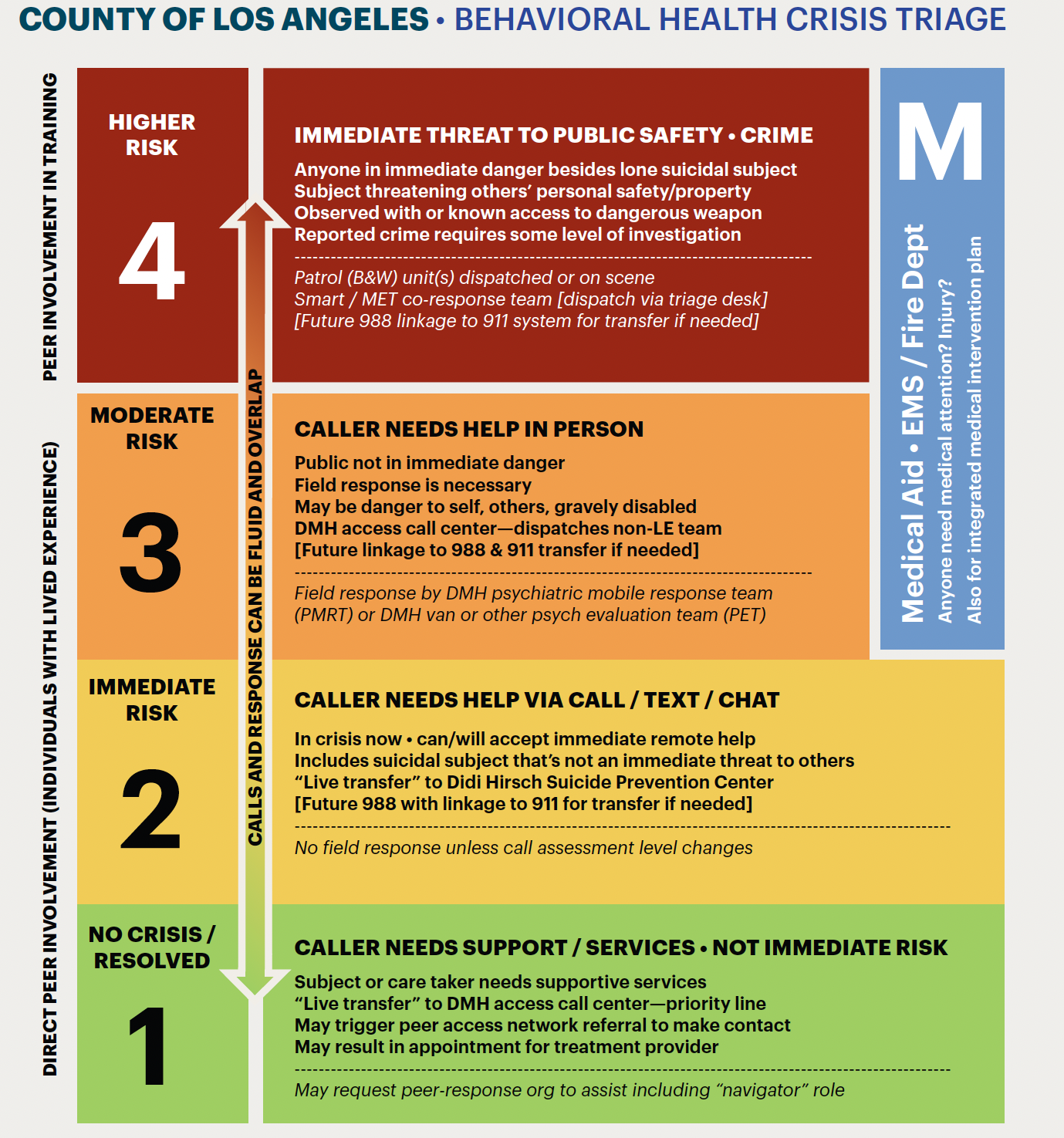
When a 911 call for service is received, dispatch center staff need to make quick decisions about which agency—law enforcement, fire, or emergency medical services—will respond to the call. The dispatcher also has to decide which type of response is appropriate. A call triage protocol is one essential tool for guiding the response to these calls. Processing guides include policies and procedures that outline the roles and responsibilities of all public safety answering points staff and offer guidelines for scenarios that officers and dispatch staff may encounter. This brief explains the benefits of these guides and provides examples from jurisdictions.
Joseph Arnett, CSG Justice Center | November 2023 | The Council of State Governments Justice Center 911 Dispatch Call Processing Protocols: Key Tools for Coordinating Effective Call Triage Jump to section .When a 911 call for service is received, dispatch center staff need to make quick decisions about which agency—law enforcement, fire, or emergency medical services (EMS)—will respond to the call. The dispatcher also has to decide which type of response is appropriate. This can be complex, as law enforcement agencies and their partners have implemented a range of alternative interventions to respond to behavioral health calls, such as crisis intervention teams, mobile crisis units, co-response teams, community responder programs, and more.
A call triage protocol—commonly known as a processing guide, decision tree, or flowchart—is one essential tool for guiding the response to these calls. Processing guides include clearly written policies and procedures that outline the roles and responsibilities of all public safety answering points (PSAP) staff and offer specific guidelines for scenarios that officers and dispatch staff may encounter. Call processing guides are needed to fully maximize the effectiveness of police-mental health collaborations (PMHCs). This brief presents examples from jurisdictions that have developed such protocols and provides guidance on the steps PSAPs can take to develop and implement their own call processing guide.
As the process of routing calls to the most appropriate response has become more intricate, the need for processing guides to triage calls has grown. Effective processing guides must do the following:
Demonstrating the effectiveness of call processing can garner buy-in and support from local officials and the public. Efficient call processing leads to improved outcomes, such as reduced response times, accurate information dissemination, and effective coordination of resources. By highlighting the impact of effective call processing on public safety and well-being, stakeholders are more inclined to actively engage with and support PMHCs, including allocation of resources and implementation of necessary improvements.
Denver 911 implemented a multiagency call flow process in their 911 call center to ensure that 911 calls are appropriately routed to the correct responder. In Denver, the potential responders include police, ambulance, fire, and Denver Support Team Assisted Response (STAR, a community responder intervention). The graphic below shows what happens when a call comes in to Denver 911 and how the call-taker determines where to route it.

The call-taker gathers information to determine if the call is STAR eligible, which includes situations involving intoxicated people, suicidal ideation, welfare checks, indecent exposure, trespassing, syringe disposal, and assistance for things such as shelter, food, vouchers, or transportation. Any time a request for service involves a crime, a potentially hostile person or dangerous situation, or an emergency medical problem, the call is routed to police, fire, or EMS.
Los Angeles County developed a call assessment matrix to help triage crisis calls, which can be served by 10 types of crisis teams. The matrix includes 4 levels; level 4 calls are the highest risk, and level 1 calls are the lowest.

Call procedures and training were developed by the LA County Sheriff’s Department Mental Evaluation Team, in collaboration with Field Operations Support Services, the LA County Department of Mental Health, and 911 subject matter experts. The training includes determining the difference between a crisis and an emergency, as well as a series of questions to help call-takers determine what level in the call assessment matrix is the best fit.
Calls determined to be levels 1, 2, or 3 are diverted to the local behavioral health provider. Any calls that indicate a crime has been committed or that there is a threat to public safety are classified as level 4, and a law enforcement response is dispatched. However, this response may still include a behavioral health component via the Systemwide Mental Assessment Response Team (SMART), a collaborative program that pairs specially trained law enforcement officers with mental health clinicians.
Dispatch protocols are designed to be tailored to each jurisdiction’s needs. Jurisdictions should look to their preexisting call processing documents when determining how to structure new guides for alternative response. Call processing guides can take many forms. They may be as simple as decision trees or may include more complex information that refers to individual incident guides. Regardless of their design, there are some common best practices for developing and successfully implementing call processing guides.